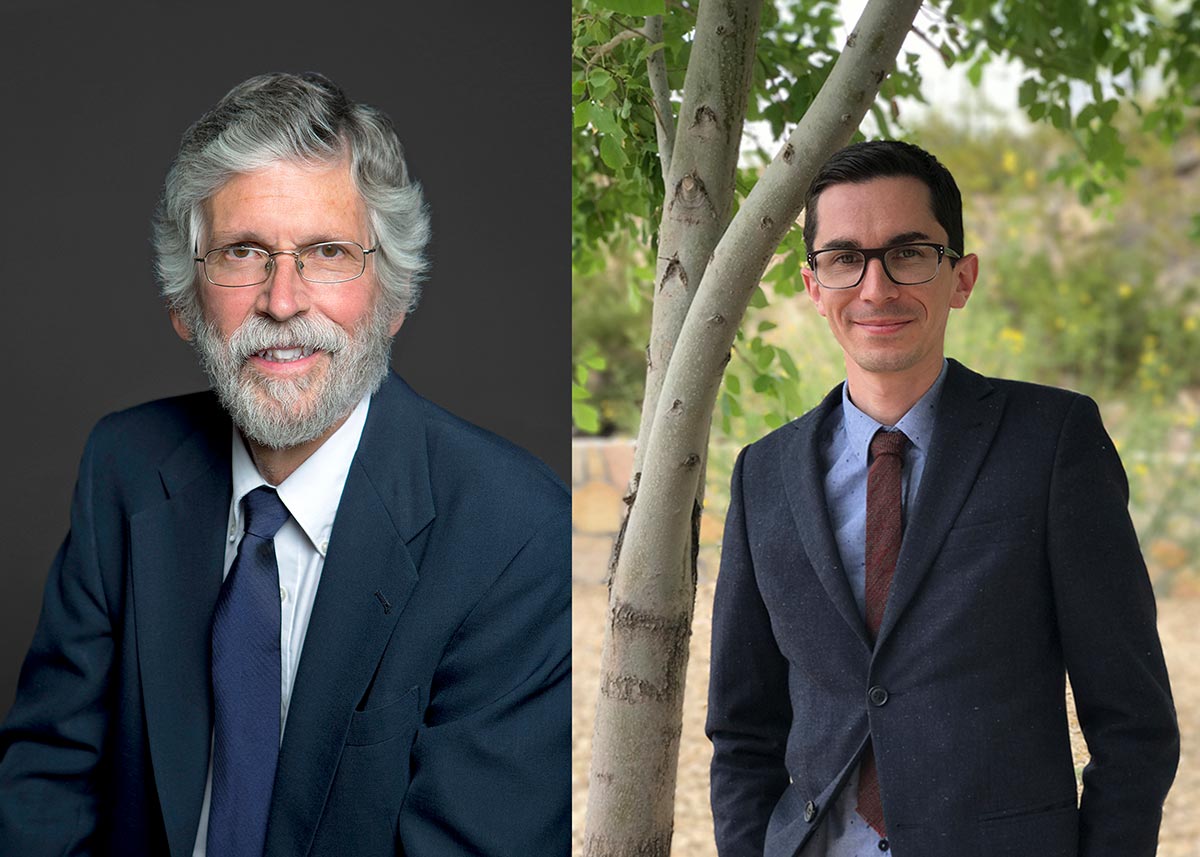UTEP Professors Advance Work With Nanocontainers Through $600,000 NSF Award
Last Updated on August 15, 2018 at 12:00 AM
Originally published August 15, 2018
By UC Staff
UTEP Communications
Two University of Texas at El Paso professors will continue their groundbreaking work with endohedral fullerene structures through a new $600,000 grant from the National Science Foundation (NSF).

Luis Echegoyen, Ph.D., a research professor and the Robert A. Welch Chair in UTEP’s chemistry department, is the principal investigator of the award from the NSF’s Chemistry Division Research Center.
Echegoyen is working with Skye Fortier, Ph.D., assistant professor in the Department of Chemistry and Biochemistry, to further their fundamental research on using Buckminsterfullerenes, or buckyballs — cage-like fused-ring structures of carbon molecules that resemble soccer balls — to house single uranium atoms and uranium clusters.
Their research represents the opening salvo of knowledge acquisition in a curiosity driven area of science. The work has been ongoing and conducted in conjunction with Ning Chen, Ph.D., associate professor of materials science at Soochow University in China; and Josep M. Poblet, Ph.D., professor of physical chemistry at Universitat Rovira i Virgili, Tarragona in Spain.
“This is a clear case of a grant that sponsors a very fundamental idea,” Echegoyen said. “We’re creating a knowledge base. We’re not solving a problem, we’re learning about something that hasn’t been seen before.”
Echegoyen was spurred to begin work in this area at the suggestion of Kenneth Raymond, Ph.D., a professor of inorganic chemistry at the University of California, Berkeley. Echegoyen delivered an address on the potential of buckyballs to house molecular structures, to which Raymond nonchalantly said he should try uranium.
Echegoyen conducted an initial experiment with Chen, who was previously a UTEP postdoctoral fellow, and detected endohedrals — which are atoms enclosed within the inner sphere of a fullerene — and a fundamental knowledge project was born.
Fortier added his expertise in actinide chemistry, which deals with the 15 metallic chemical elements with atomic numbers 89-103, and together with their international collaborators, the UTEP pair published a paper in the journal Chemical Science in May 2017, which according to Echegoyen, represents the first evidence of crystallographically characterized uranium endohedrals.
“To have an atom like that sitting inside these cages is really very strange,” Fortier said. “These elements, these metals, they like to grab on and bind to as many things as possible. So, to force them into this bizarre empty cavity, that in itself is amazing. We can start answering the question of, ‘What is the uranium doing?’ It has to have some interaction with the cage. And that’s something we’re still trying to understand.”
Echegoyen said the grant, which is a four-year award, will support student research, materials and some travel. They will also lead a student-outreach effort, which will see 20-25 area middle school students take part in monthlong weekend activities to bolster their interest in chemistry.
“This award is not only a testament to the level of research happening at UTEP,” Fortier said. “It is also an opportunity to positively impact our extended community. We have the chance to positively impact younger students and build the next generation of scientists.”
Echegoyen added that piquing young students’ interest now could one day advance the work he and Fortier are conducting. One of the potential applications of the study of endohedrals is, based on their magnetic properties, to create magnetic memory at the single-molecule level.
“That means you can build a memory device or a molecular hard drive with amazing data storage capacity,” Fortier said. “You can do quantum computing and a whole number of other things.”
For now, Echegoyen said, the acquisition of knowledge remains the mission.
“This is fundamental chemistry at its best,” he said. “We’re establishing a basis of knowledge about fundamental bonding properties of actinides inside these unique nanocontainers. This could be potentially useful sometime in the future. In the meantime, we’re learning things that were not known before.”